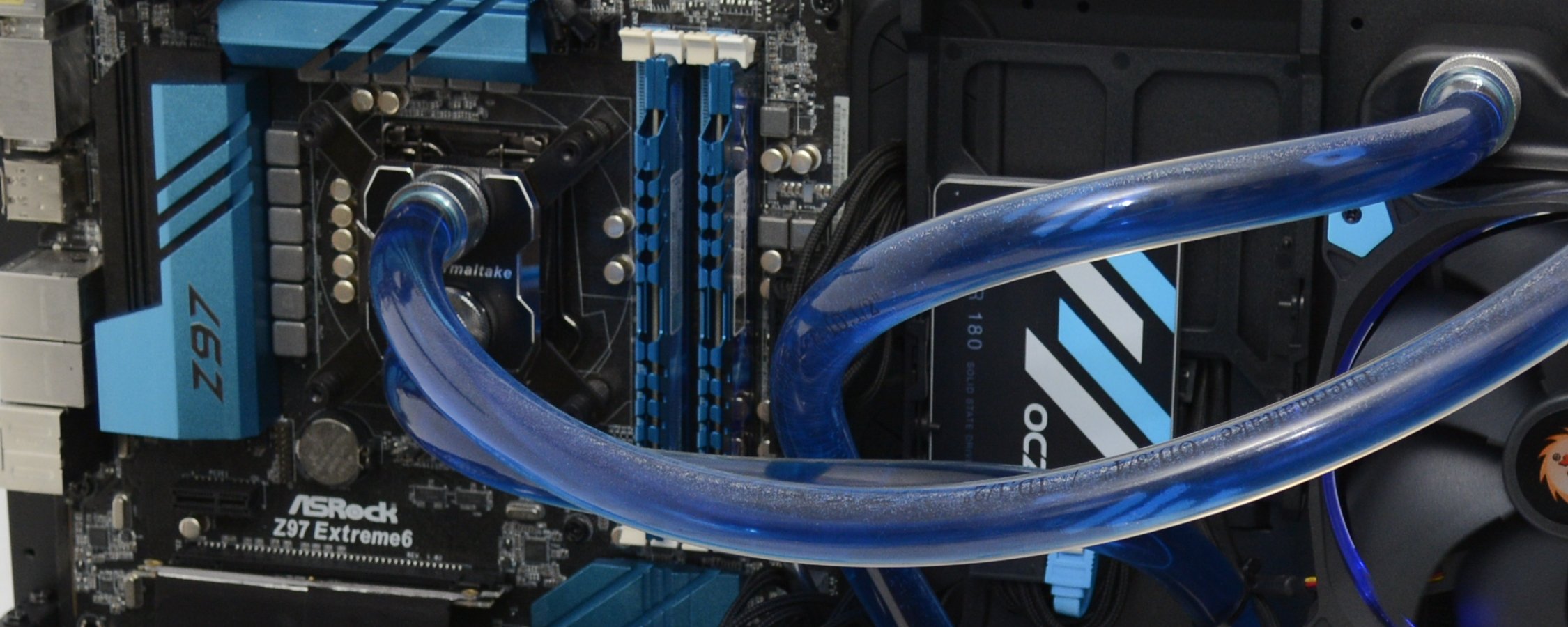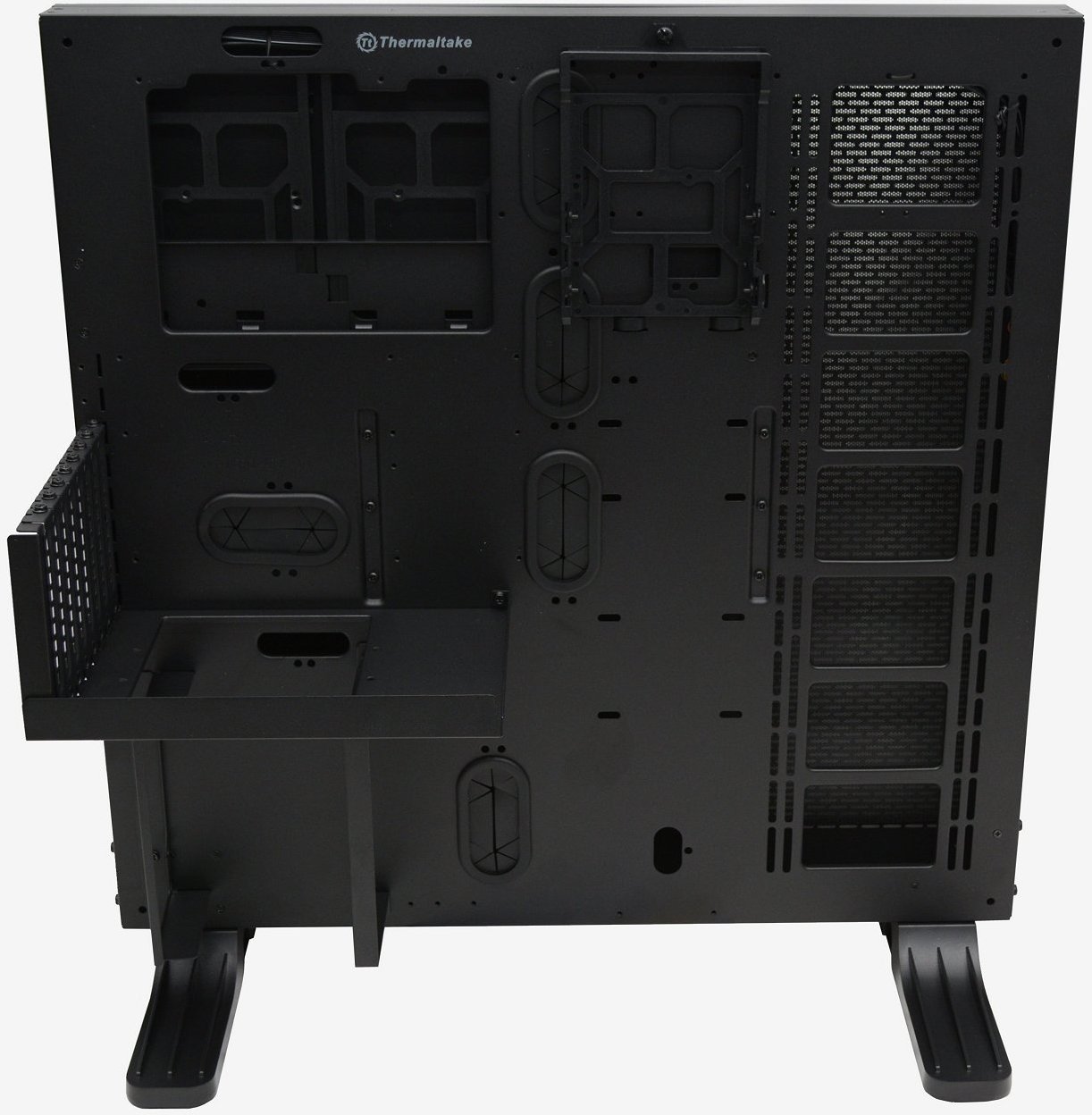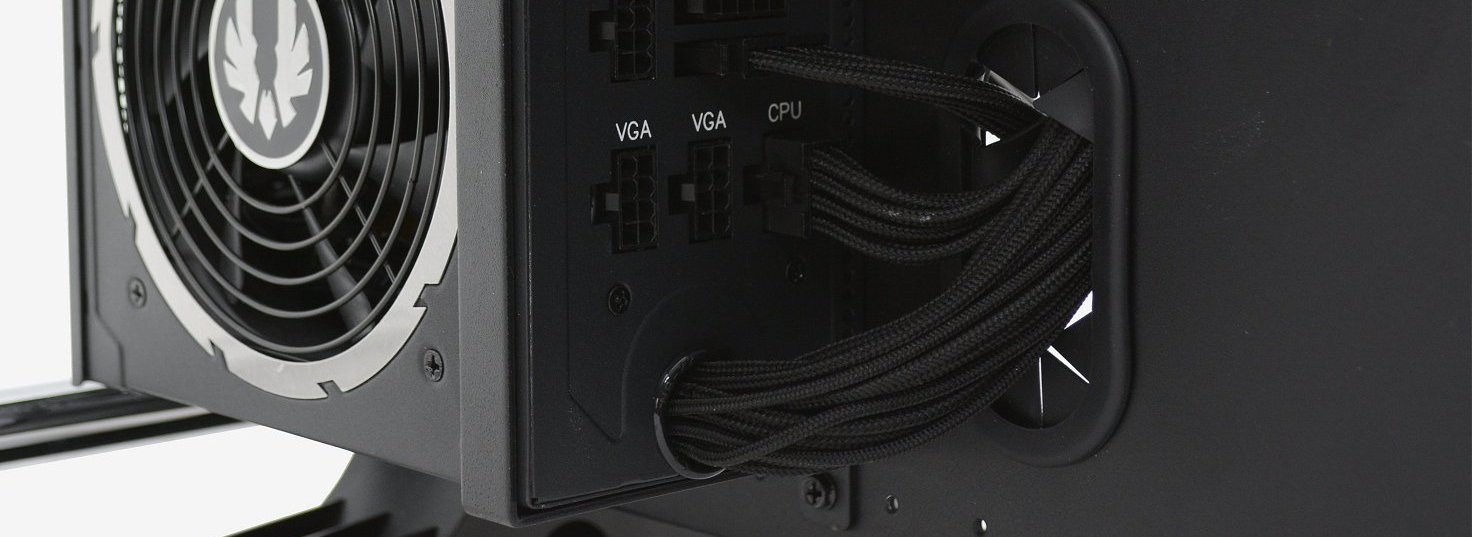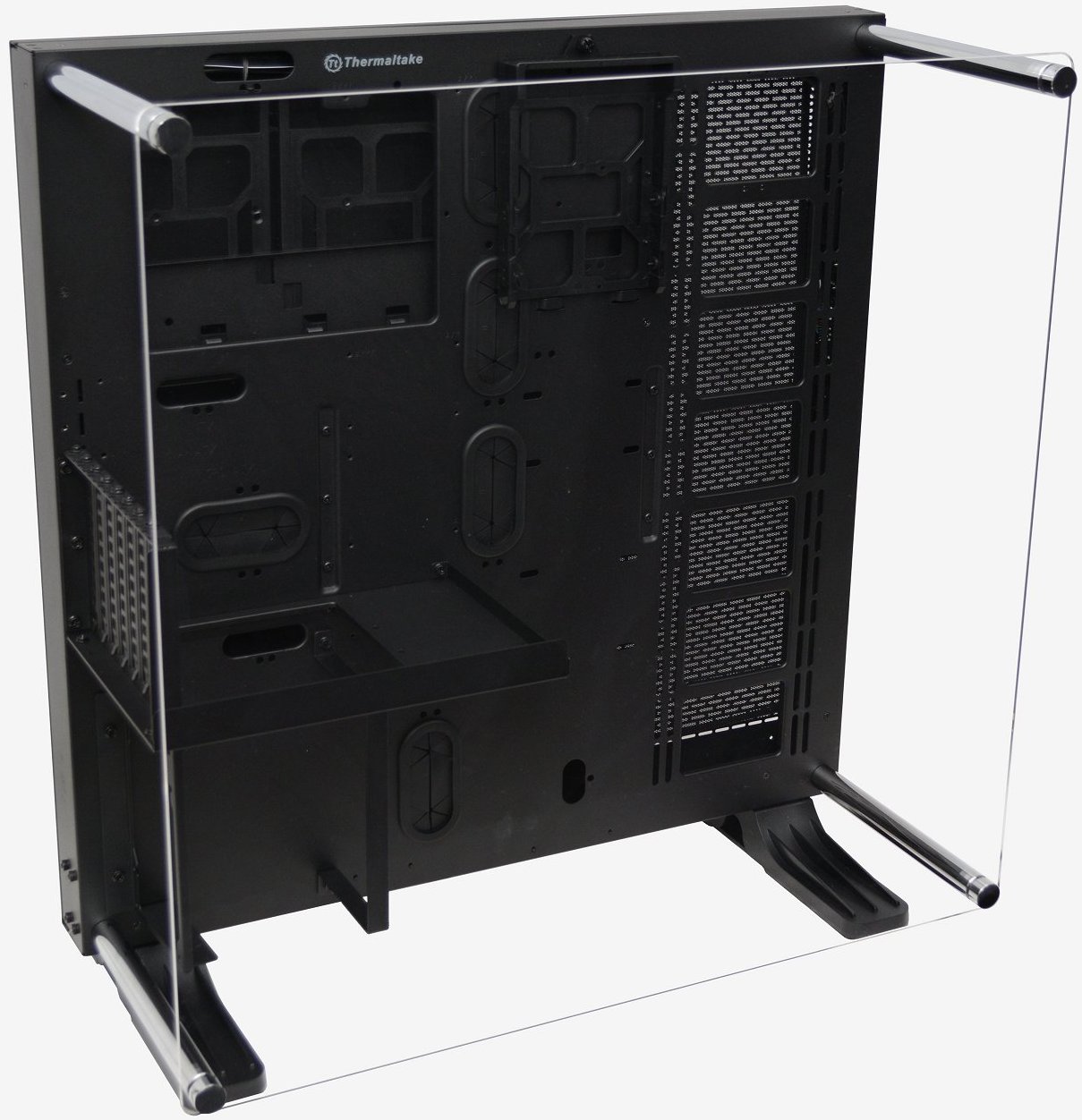The Core P5's Façade
Out of the box the Core P5 looks like something you might throw in a rack server. The body of the case measures just 50mm wide, though it is the bulk of the case. From here you can attach four chrome standoffs for the acrylic window and an optional pair of feet at the bottom for vertical desktop mounting.
The first thing you'll want to do is attach the expansion slots to the Core P5 in preparation for the motherboard installation. There are two ways of going about this depending on your preference and hardware selected for the build.
Disappointingly, the user manual leaves a lot to be desired, and while the installation process isn't overly complex, it is unorthodox, which would make clearer documentation appreciated.
After some messing about it became clear that the Core P5 supports the more traditional expansion card position as well as a less conventional method using riser cables.
The riser cable method is nice because it makes installing and removing the graphics card(s) much easier when the Core P5 is mounted vertically. That said, the real reason for this is to allow gamers to better show off their graphics card. Regardless of how you mount the graphics cards they will be limited to a length of 280mm with a reservoir installed or 320mm without. That said, technically, without a reservoir installed there is no length limitation.
Other notable features that can be attached to the surface of the Core P5 include a PSU mounting bracket and support, and an optical 3.5" drive cage. The Core P5 will support power supplies of any length really, though Thermaltake specifies a maximum length of 200mm.
This limitation likely comes about by assuming a liquid-cooling reservoir will be installed. Without a reservoir there is nothing limiting the length of the PSU. That said, we should point out that even at 200mm long it will be extremely difficult to route the cables through the cable management hole located directly behind the back of the PSU, assuming it's no more than 180mm long. Covering this hole will make it extremely difficult to create a neat build with the Core P5 assuming you are not handy enough to dremel out your own.
The motherboard location supports the Mini-ITX, Micro ATX and Standard ATX form factors and as expected there is a huge cutout behind the motherboard tray for rear access. That said, there is a mounting plate on the rear side that blocks a good portion of this rear access and removing it to install CPU coolers is a real pain.
There are plenty of cable management holes and while some of them are well placed, many aren't. Quite a few of them back onto the same mounting plate that blocked part of the motherboard tray hole and this makes routing cables more difficult than it should be.
A single 3.5" or 2.5" storage device can be shown off on the front side of the Core P5 and for testing we tried a WD Red Pro 4TB hard drive as well as an OCZ Vector 180 480GB SSD.
The entire right side of the Core P5 is dominated by a long ventilated panel featuring numerous 120mm and 140mm mounting points. This section of the case is designed to accommodate radiator(s) ranging from just 120mm in size all the way up to 480mm and for this review we will be installing a 420mm radiator with three 140mm fans.
That said, if you don't wish to install a radiator here it is possible to mount a number of 2.5" or 3.5" drives along the ventilated section.
In each of the Core P5's corners are mounting holes for the supplied four chrome stand-offs that support the acrylic window. The window is offset by 190mm, which is a massive amount of headroom, but Thermaltake needed this room to accommodate the hoses in their liquid-cooling kits. Those not opting for liquid-cooling will have a CPU cooler height limitation of 180mm, which is more than enough to install any tower cooler on the market.
The window is 5mm thick which is probably the thickest acrylic window we have seen on a computer case, though with at least 530mm separating the mounting points the window needed to be thick in order to avoid flexing. The acrylic window is difficult to keep clean and you have to be wary of what you use to avoid scratching the surface, which is incredibly easy to do with acrylic.
This is one of the key advantages to using glass, and while we understand the costs involved we would love to see a glass version of the Core P5 as we would happily pay more for the more durable and higher quality material.









